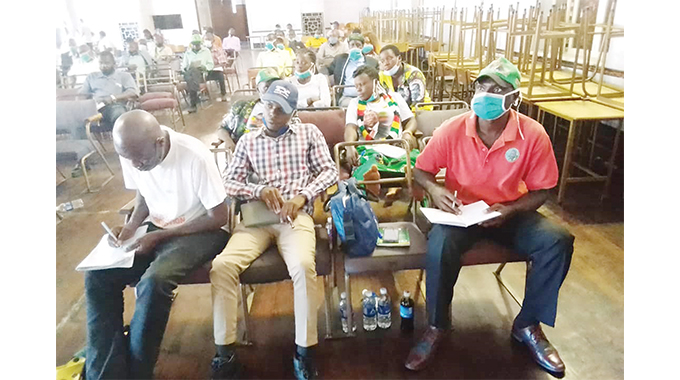Farmers threaten Midlands Black Rhino Conservancy

Michael Magoronga, Midlands Correspondent
UNSANCTIONED and uncoordinated settlements within the Midlands Black Rhino Conservancy (MBRC) have become a threat to animals through increased human-wildlife conflict.
Farmers are reportedly settling within the 63 000-hectare conservancy which is home to elephants, leopards, buffalo, rhino, giraffes and zebra among other animals. This has led to a conflict between the farmers and conservancy authorities.
As a result, stakeholders recently gathered at the conservancy for an awareness campaign where conservator, Mr Brilliant Chibura outlined challenges being faced. “Of late, the conservancy has suffered uncoordinated settlements that have led to habitat fragmentation and human wildlife conflict and also pausing a threat to the remaining black rhino species,” said Mr Chibura.
The conservancy was formed in 1987, started with 50 rhinos which were transferred from the peripheral locations where they suffered from poaching and smuggling. Currently, the conservancy is home to 7 black rhinos as most of them have suffered from either poaching or died due to natural causes. Mr Chibura said zoonotic diseases were also a challenge as wildlife mixes with livestock.
“As you know as Africans, most of us are pastoralists, most farmers bring their livestock and they mix with wildlife leading to diseases being spread from livestock to wildlife or the other way round.
This has brought destruction to the ecosystem mainly by the fragmentation of the habitats due to the change in land use,” he said. He appealed to Government to assist in eradicating uncoordinated settlements.
“We are appealing to Government and relevant authorities to assist in the prevention of these unsanctioned settlements by means of ensuring there is strict adherence to ecological impact assessment by the people that have been brought into the conservancy,” he said.
Mr Chibura said lately, the rhinos were giving birth due to an improved environment emanating from the engagements.
“We are glad that in January, we have one rhino which gave birth to a calf bringing the number to seven. Of late they were not giving birth since the environment was not conducive,” he said.
He said mining activities were not helping matters. “We are facing challenges from mining communities that are not conducting proper rehabilitation of their mining pits.
“We are however grateful to some of them who chip in with fuel so that we can conduct our patrols as we monitor the wildlife,” he said.
Speaking on the same occasion, MBRC Chairperson, Mr Ben Manyunyure said plans were underway for reforestation so that wildlife can have enough vegetation.
“We have already secured funding for the tree planting process and we intend to cover the whole hectarage of the conservancy. We are working together with EMA and the department of wildlife as well as settlers. we have indigenous and fruit trees as we move towards reducing adverse effects of climate change,” said Mr Manyunyure.
He said the main target was the areas that were left open by miners who did not rehabilitate the land after extracting minerals exposing both wildlife and livestock to danger.
He said the long-term security of the animals and the natural environment, lies in uplifting and educating the community in particular the youths, as part of empowerment and community social investment.
The MBRC is the only location in the Midlands Province with rhino and has intentions to introduce white rhino and other animal species to boost economic value through tourism.
The meeting was attended by representatives from the Zimbabwe Republic Police, Zimbabwe Parks and Wildlife Management Authority, farmers, traditional leaders and journalists among others.











Comments